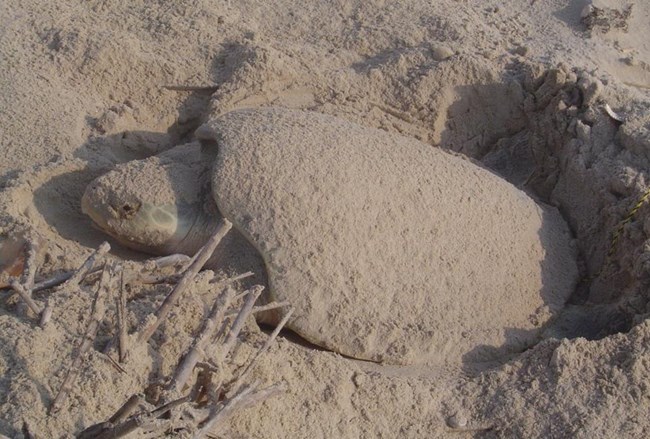
Kemp's ridley sea turtles emerge from the sea to lay their eggs in the sand. In Texas, nesting has been documented from April through mid-July, although nests have been found in Mexico from March through August. Kemp's ridleys often nest when winds are strong, but this is not always the case. During nesting, they sometimes become partially covered with blowing sand or sand that they sweep onto themselves. Their olive green coloration blends with the sand and vegetation. Both of these factors can make them difficult to see. During nesting, Kemp's ridleys crawl up the beach, dig a cavity (hole) with their rear flippers, deposit the eggs in the cavity, cover the nest, and return to the sea. The entire process takes from 30 minutes to an hour. The nesting turtle does not provide any care for her eggs or monitoring of them. While crawling up the beach and digging the cavity, nesters can be wary. Do not rush up to them then or you may frighten them back into the water without nesting. While depositing eggs, Kemp's ridleys enter a trance-like state during which time they are oblivious to what is going on around them. At any time during the nesting process they will not and cannot move quickly to avoid a passing vehicle and can be crushed and killed due to collision. They sometimes nest in vehicular tire ruts and this increases their vulnerability to collision. 
|
Last updated: October 19, 2018
